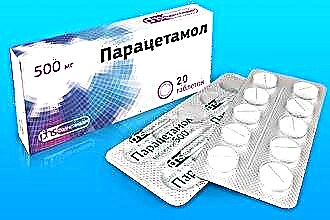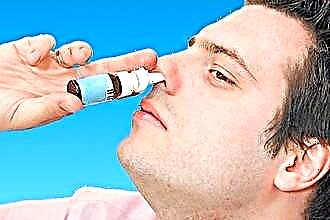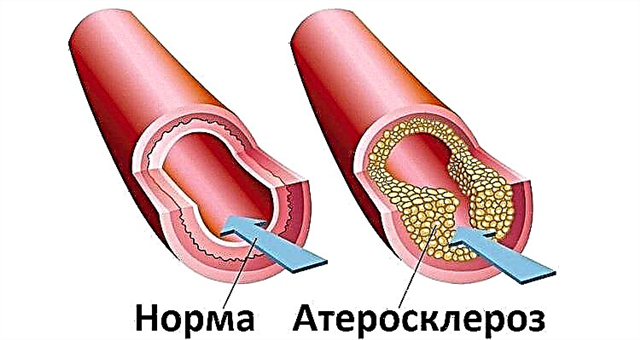Atherosclerosis of the lower extremities is a common vascular disease that occurs as a result of a disorder of lipid metabolism and is characterized by damage to the inner wall of the artery, obstruction of the lumen and the formation of plaques that impede normal blood flow. All this leads to impaired functioning of the legs. Conservative treatment of such a pathology is aimed at all links of pathogenesis, as well as the prevention of complications. For this, a wide range of drugs are used, which are discussed in the article.
Treatment methods
Medical treatment of atherosclerosis of the lower extremities involves the achievement of the following goals:
- reduction in pain;
- maximum improvement in the functions of the lower extremities;
- prevention of complete blockage of the vessel;
- slowing the progression of the disease;
- prevention of negative consequences.
For this purpose, a wide range of local and systemic medications are used, as well as physiotherapy and diet correction.
Local: ointments, gels, creams
Ointment for atherosclerosis of the lower extremities, which has a localized therapeutic effect, can significantly reduce the risk of adverse reactions, as well as pointwise affect the pathogenetic links of the disease. Let's talk about them in more detail:
- Anticoagulants are needed to prevent blood clots from forming in the affected vessels. The process can lead to both local complications (gangrene) and affect the systemic blood flow. Some drugs from this class improve the condition of the vascular wall. Most often they use "heparin ointments" - "Lioton", "Dolobene Gel" and others.
- Angioprotectors improve blood supply and permeability of the arterial walls, increase vascular tone, and have a protective effect against the endothelial membrane.
- Antibiotics One of the most frequent consequences of this pathology is trophic ulcers, which occur as a result of a violation of the blood supply to the tissues. To prevent infection and the development of necrosis, antibacterial agents of a wide spectrum should be used - "Levomekol" (contains chloramphenicol and methyluracil), "Sintomycin", "Agrosulfan".
- Pain relievers. Means such as "Diclofenac" can reduce pain, inflammation, remove edema, which significantly improves hemodynamics in the damaged vessel.
- Antiseptics are used for trophic lesions and can stop the progression of the necrotic process. They are prescribed in conjunction with antibiotics. The most common representatives: Betadine, Vokadin, Ranostop.
Constant systemic use of drugs: a list of necessary
Oral drugs affect the pathogenesis of the disease at the systemic level. They contribute to the normalization of lipid metabolism, lower cholesterol levels, prevent the formation of blood clots and blood coagulation, thereby preventing ischemic disorders.
The main class of drugs used in this case is lipid-lowering drugs. These are drugs, the main action of which is to lower the level of "bad" cholesterol (low density lipoprotein) in the blood. It is these substances that are considered the main cause of the development of atherosclerosis. For this purpose, the following pharmacological classes are used:
- Statins act on the stage of cholesterol synthesis. They inhibit the enzyme due to which it is formed. In addition, statins improve blood rheology by lowering blood viscosity, which reduces the risk of blood clots. There are four generations:
- 1st generation - Lovastatin, Simvastatin;
- 2nd - "Fluvastatin";
- 3rd - "Atorvastatin";
- 4th - "Rosuvastatin", "Pituvastatin".
- Bile acid sequestrants promote increased excretion of bile. Since it is partially formed from cholesterol, more of its formation and excretion will lead to a decrease in LDL levels. Sequestrants block the absorption of cholesterol in the intestines, reducing its entry into the bloodstream. Main representatives:
- Colestipol;
- "Quantalan";
- "Questran";
- "Colesevelam".
- Fibrates contribute to the disruption of the synthesis of triglycerides - lipid derivatives, which also affect the development of atherosclerosis of the lower extremities. A group of drugs affects the corresponding enzyme systems in the liver and blocks the formation of cholesterol. This class includes the following medicines:
- Clofibrate;
- "Gemfibrozil";
- "Ciprofibrate";
- "Etofibrat";
- "Clofibrid".
- There is information that a nicotinic acid (vitamin PP) effectively lowers the concentration of cholesterol and triglycerides, normalizes blood pressure, has a vasodilating effect, improves microcirculation and prevents thrombus formation. In addition to "Niacin" itself, its derivatives are used:
- "Niceritrol";
- "Aluminum nicotinate";
- "Nicotinyl alcohol".
The next most important task in the treatment of such a pathology is the prevention of thromboembolic complications. For this purpose, medications are used that affect blood clotting:
- Antiplatelet agents affect the first stage of coagulation - the formation of a clot from platelets. They prevent the aggregation and adhesion of these cells, due to which a thrombus does not form and the process does not reach the second stage. The most commonly used:
- "Aspirin" (as well as other derivatives of salicylic acid, for example, triflusal);
- "Clopidogrel";
- "Dipyridamole";
- "Tirofiban".
Anticoagulants interfere with the second stage of hemostasis, which results in the formation of fibrin filaments that trap red blood cells, leading to the formation of a red blood clot. There are two groups of these drugs:
- direct anticoagulants - heparin and its derivatives, "Girulin", "Lepirudin";
- indirect - "Warfarin", "Neodikumarin", "Fenilin".
Means that improve microcirculation and angioprotectors help to improve the blood supply to the tissues fed by the sclerosed artery. The resulting ischemia (oxygen starvation) disrupts the trophism of the organ, as a result of which necrotic changes may develop. The manufacturers claim that their drugs improve perfusion, widen the lumen and reduce the permeability of the vascular wall:
- "Pentoxifylline";
- Trental;
- "Vasonite";
- Etamsilat.
Symptomatic treatment: what can you take and when?
Atherosclerosis of the legs is accompanied by many unpleasant symptoms that need immediate relief. Most often, patients are worried about pain due to the accumulation of decay products in muscle cells. To remove it, non-steroidal anti-inflammatory drugs are used:
 "Paracetamol";
"Paracetamol";- Meloxicam;
- "Nimesulide";
- Ibuprofen;
- Diclofenac.
Usually doctors recommend local medicines for this - ointments and gels.
In the overwhelming majority of cases, atherosclerosis is accompanied by an increase in pressure. This not only worsens the condition, but also contributes to the progression of the disease. To restore normal blood pressure, the following drugs are used:
- angiotensin-converting enzyme inhibitors (Captopril, Enalapril);
- beta-blockers (Anaprilin, Metoprolol, Bisoprolol);
- diuretics ("Veroshpiron", "Lasix", "Hydrochlorothiazide", "Ethacrynic acid");
- angiotensin receptor blockers (Losartan, Valsartan);
- antagonists of calcium channels ("Nifedipine," Verapamil ").
Medicines for obliterating atherosclerosis
Obliterating atherosclerosis is characterized by significant circulatory failure of the lower extremities, which leads to intermittent claudication, impaired sensitivity, and chilliness of the legs. It usually develops against the background of other diseases - diabetes mellitus, hypothyroidism, or autoimmune pathologies of the connective tissue.
There is no single treatment regimen for this disease, since its course is extremely individual. The doctor in each case makes a decision based on the condition and laboratory tests of a particular patient. The main goal of conservative therapy is the prevention of severe consequences, for example, trophic ulcers and gangrene. To do this, use the following groups of drugs:
- Lipid-lowering drugs of the classes considered above affect the course of atherosclerosis obliterans at the systemic level.
- Pain relievers... They are used both as systemically acting NSAIDs and as local anesthetics in the form of ointments: Dikain, Anestezin, Pyromecain.
- Antispasmodics designed to expand the lumen of blood vessels, lower blood pressure and improve microcirculation in the capillaries. Usually used "No-Shpu" and "Papaverine hydrochloride".
- Anticoagulants and antiplatelet agents are needed to prevent thromboembolic complications. Apply "Aspirin", "Heparin", "Warfarin" and others.
- Vitamin complexesare necessary to improve metabolism in tissues, support reparative processes, and strengthen immunity. Recommended ascorbic (C) and folic (B9) acids, thiamine (B1), cyanocobalamin (B12), retinol (A), tocopherol (E).
- Antioxidants reduce the negative effects of lipid peroxidation, which is activated by the atherosclerotic process. Prescribe "Cytochrome C", "Preductal", "Neoton".
- Antibiotics used to combat already developed infectious complications - purulent-necrotic ulcers. They use drugs with a wide spectrum of action: fluoroquinolones ("Ciprofloxacin", "Moxifloxacin"), cephalosporins ("Cefepin", "Cefotaxime"), aminoglycosides ("Streptomycin", "Amikacin").
Before using any medication, you should consult with your doctor.
Conclusions
The complexity of the disease necessitates a complex medication. For this purpose, drugs are used for the treatment of atherosclerosis of the vessels of the lower extremities from a variety of pharmacological classes. Such a variety requires a high-quality examination of the patient in order to prevent all possible risks and contraindications. Therefore, it is very dangerous to self-medicate, since only a specialist can correctly determine safe combinations.

 "Paracetamol";
"Paracetamol";

